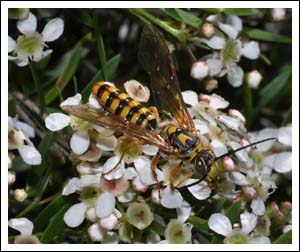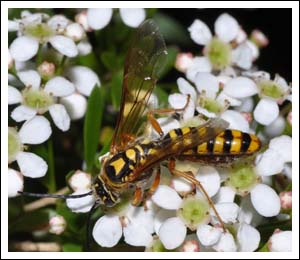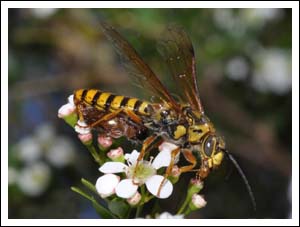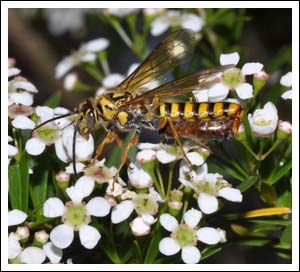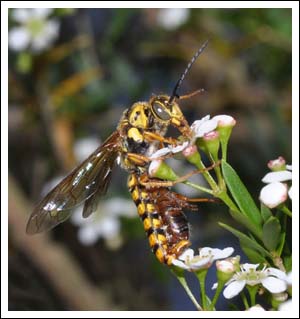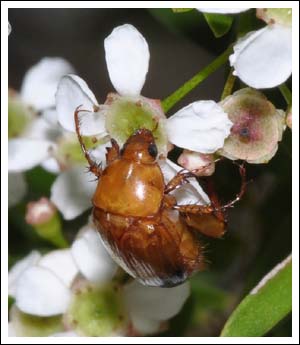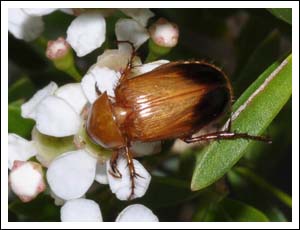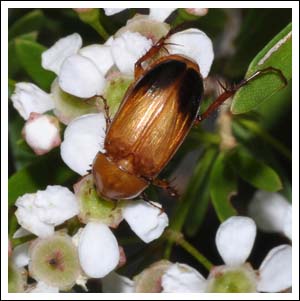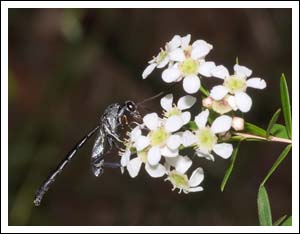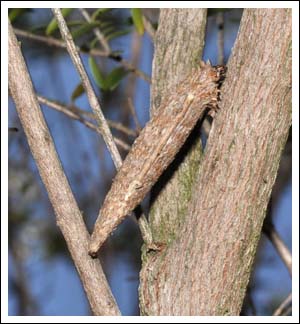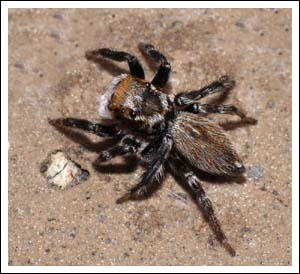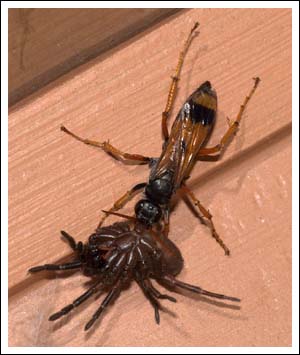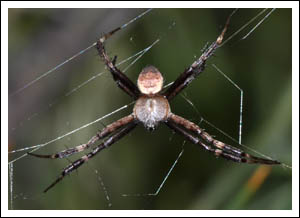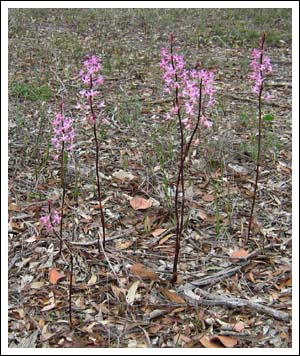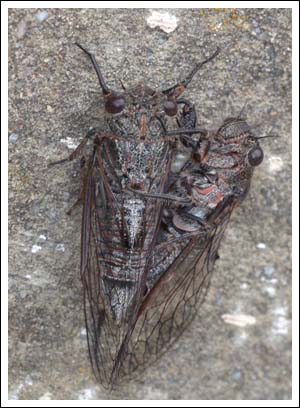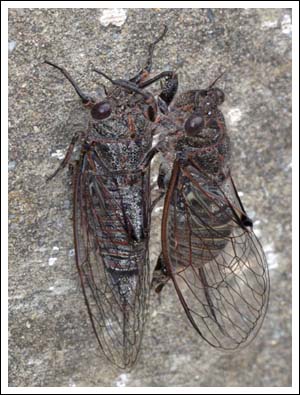When the Baeckea virgata (Sannantha pluriflora) flowers at Christmas time it is a magnet for insects seeking nectar. Before the big frost the flowers of our Leptospermum petersonii used to attract the yellow flower wasps, it is now sadly gone, but the baeckea has filled the breach. Females are wingless, but when coupled the males take them around the flowers to feed. When ready to lay the females drop to the ground, where they burrow in to attach their eggs to soil dwelling insects. Here are images of male wasps, some showing the female tucked under the male’s abdomen. Click all images to enlarge.
Small long-legged scarab beetles also feed greedily on the nectar.
Gasteruptiid wasps parasitise solitary bee nests. A pair was feeding on the baeckea flowers, the female with the long ovipositor eluded the camera but the male paused and was snapped.
The foliage too provides sustenance for those who prefer it, eg. case moth larvae.
Many species of fly and other insects visit the flowers, subjects for another time.

